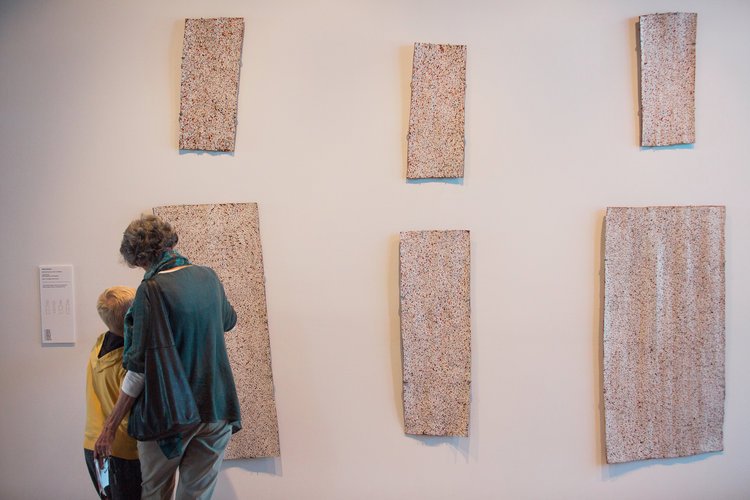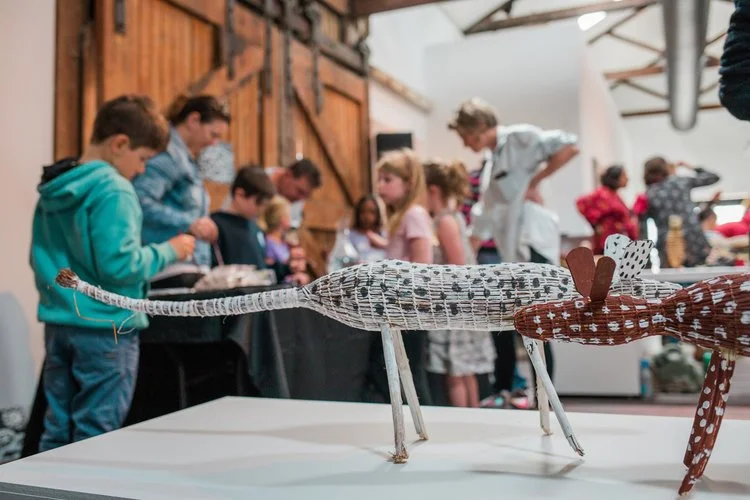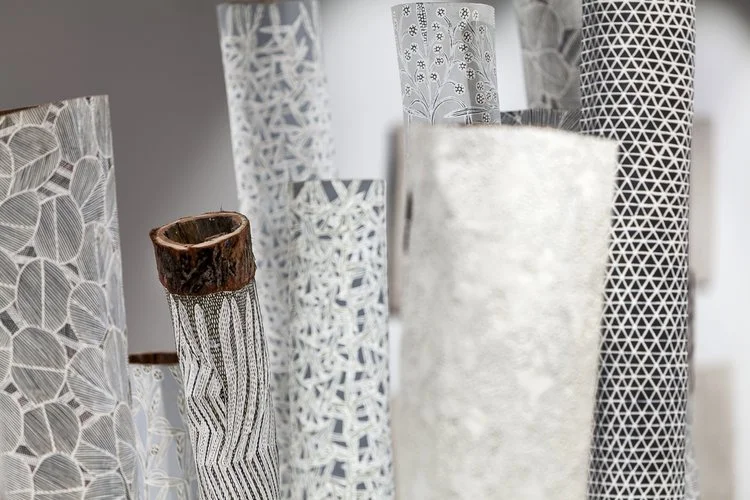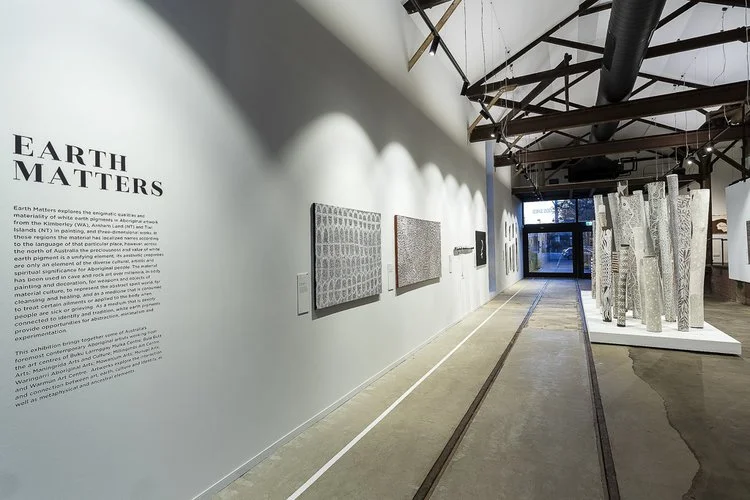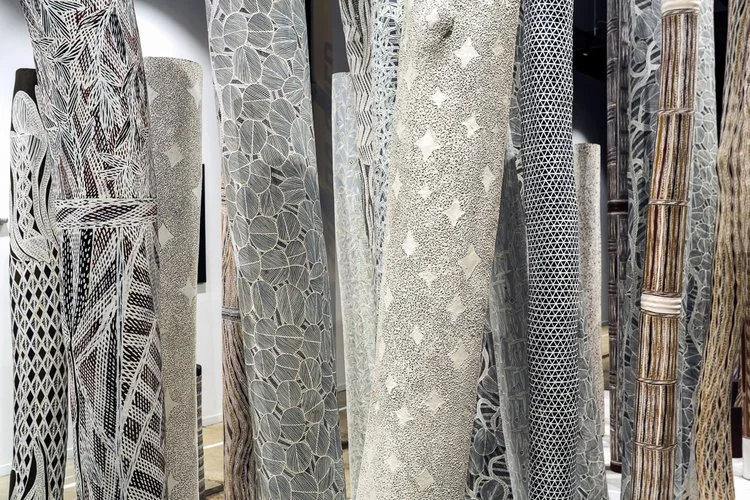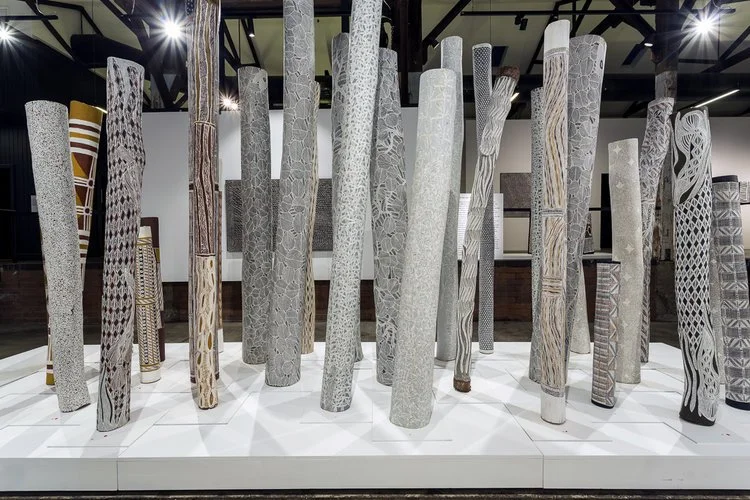Earth Matters
The enigmatic qualities and materiality of white earth pigments in Aboriginal artwork from the Kimberley (WA), Arnhem Land (NT) and Tiwi Islands (NT) in painting, and three-dimensional works was presented in the exhibition at FORM entitled Earth Matters. In different regions the white earth pigment has localized names according to the language of that particular place, however, across the north of Australia the preciousness and value of this material is a unifying element. Its aesthetic properties are only an element of the diverse cultural, artistic and spiritual significance for Aboriginal people. The material has been used in cave and rock art over millennia, in body painting and decoration, for weapons and objects of material culture, to represent the abstract spirit world, for cleansing and healing, and as a medicine that is consumed to treat certain ailments or applied to the body when people are sick or grieving. As a medium that is deeply connected to identity and tradition, white earth pigments provide opportunities for abstraction, minimalism and experimentation.
Earth Matters brought together some of Australia’s foremost contemporary Aboriginal artists working from the art centres of Buku Larrnggay Mulka Centre ; Bula Bula Arts; Maningrida Arts and Culture; Millingimbi Art Centre; Waringarri Aboriginal Arts; Mowanjum Arts; Munupi Arts, and Warmun Art Centre. Artworks explore the interaction and connection between art, earth, culture and identity, as well as metaphysical and ancestral elements. This material is one of the oldest types of paint used in Australia, and provides an insight into historic and cultural traditions, revealing trade routes, practices of exchange and adornment.
Works were acquired for the Wesfarmers Collection; The Stokes Collection. Photos courtesy: Sundae Studios
